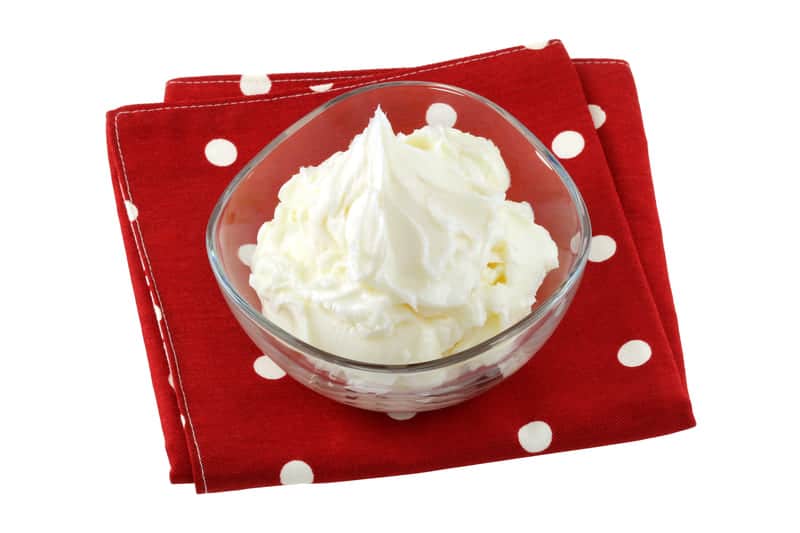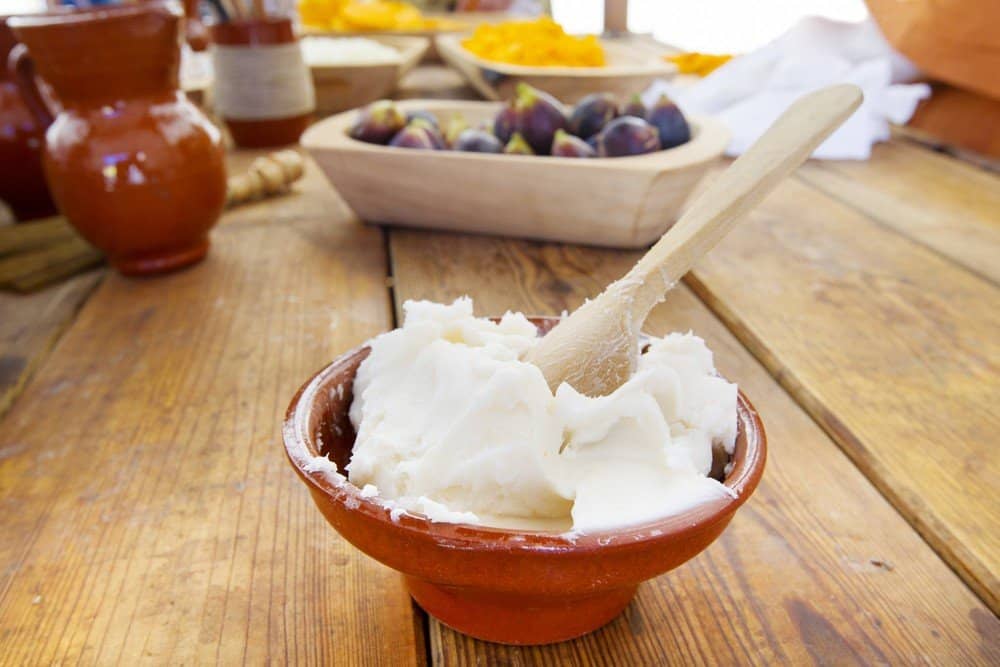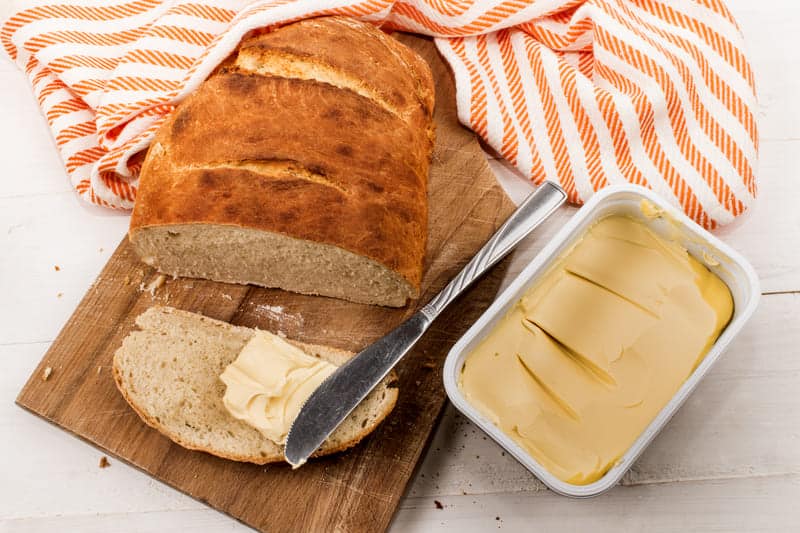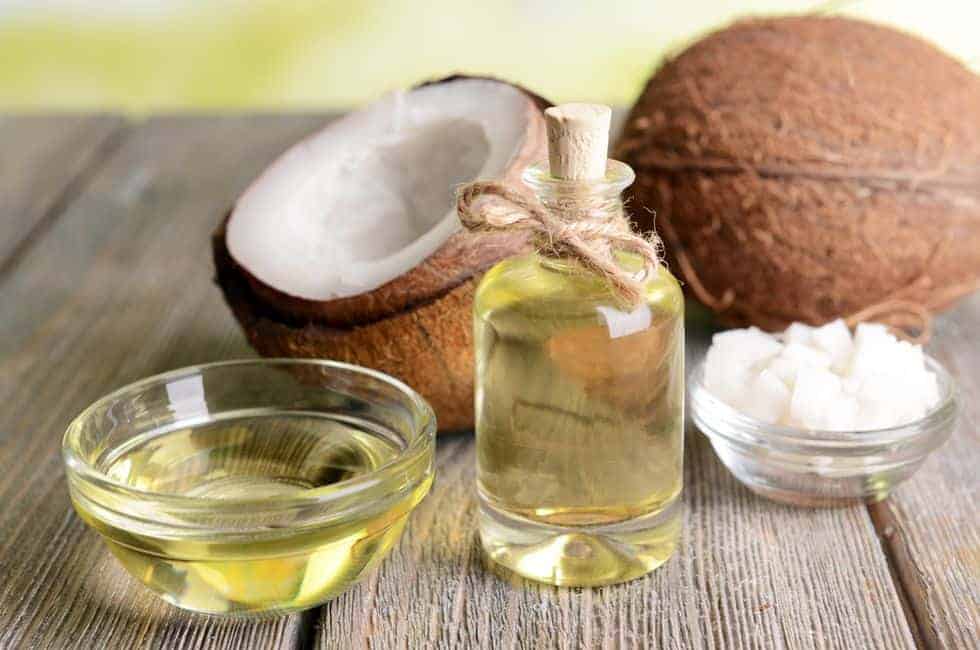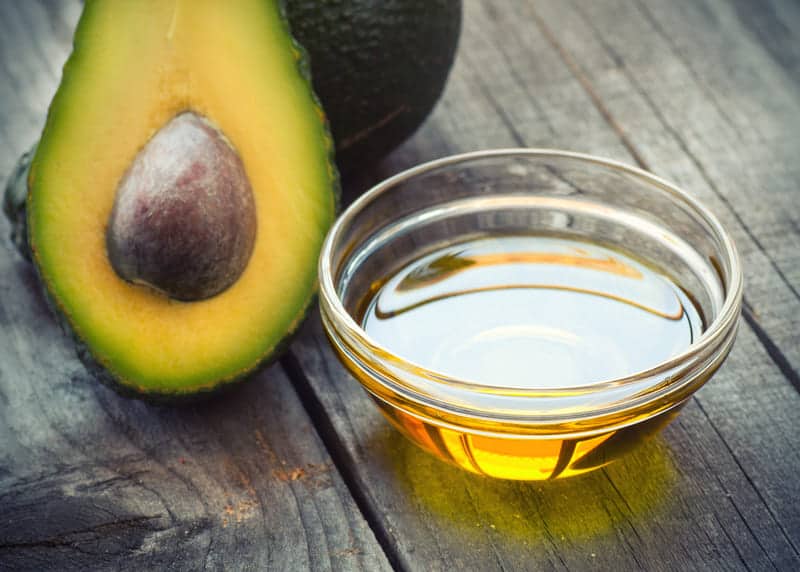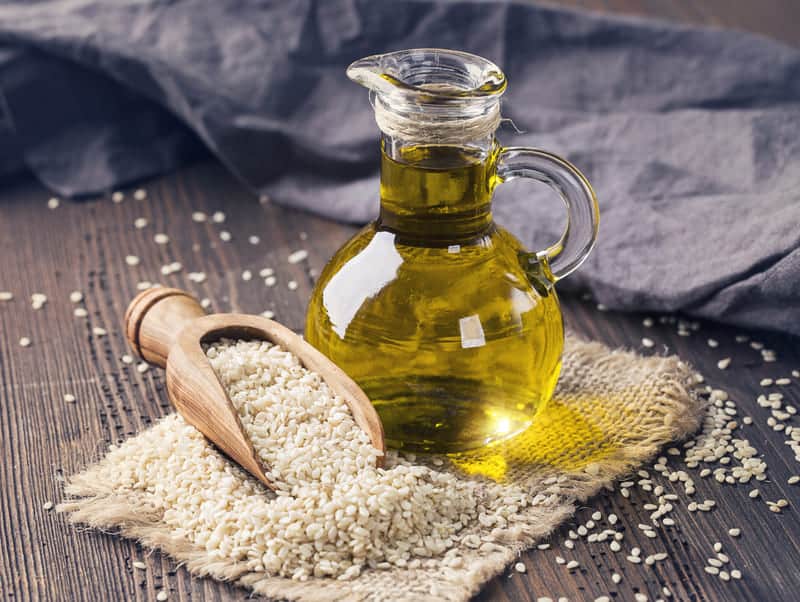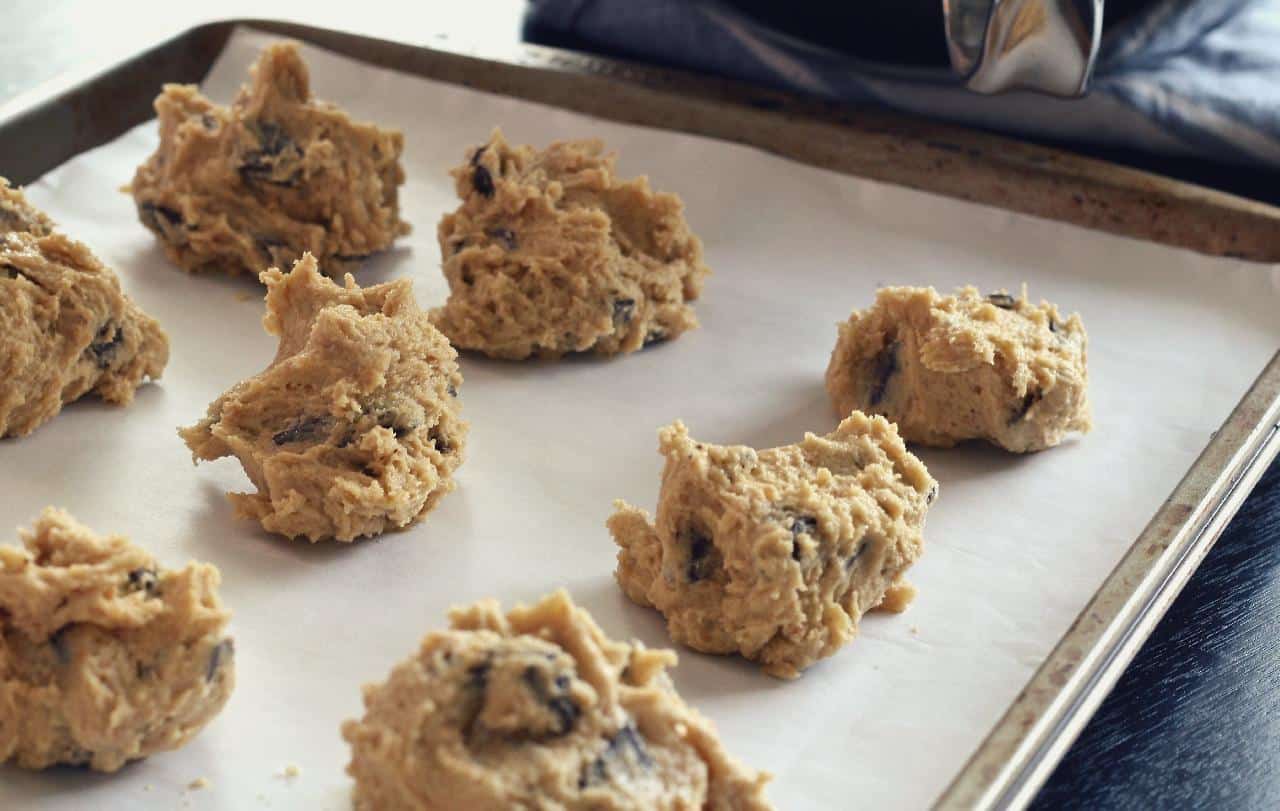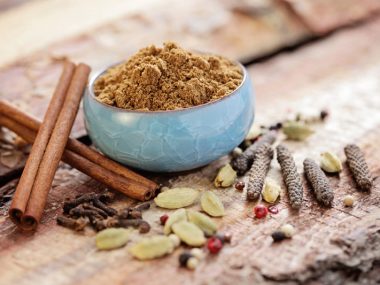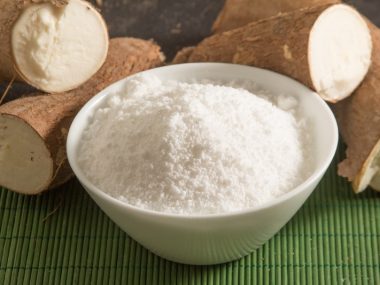Any type of fat that has a solid texture at room temperature is considered shortening. In this category fall lard, butter, margarine, and hydrogenated vegetable oils.
Lard was the first ingredient used as a shortening in the production of baked goods. Margarine, butter, and hydrogenated oils were invented and used as shortenings later.
These ingredients are called shortenings because they are coating the gluten strands in the flour and don’t allow them to stretch. So, they are shortening the gluten strands. This results in a short, crumbly, and crispy baked product, which is soft after baking.
Vegetable shortenings don’t have any flavor like butter. Thus, you will not get the buttery flavor like when you are using butter as a shortening.
If you don’t have shortening, but you want to make a cake or a pie you can use some of the substitutes in this article. Our list of substitutes includes butter, margarine, lard, coconut oil, palm oil, olive oil, avocado oil, sesame oil, safflower oil, and vegan butter.
Vegetable Shortening Substitutes
Vegetable shortenings are made from partially hydrogenated and hydrogenated vegetable oils like palm, soybean, or cottonseed oil. They can be found as all-purpose shortening, solid, liquid, and cake shortening. All types of shortenings have low water content and high smoke point and are used in different types of food.
Liquid shortening is perfect for deep frying and cakes. Solid shortening is used in making bread, pastries, and pies. All-purpose shortening doesn’t have added emulsifiers. But cake shortenings have added emulsifiers which are helping the cake to retain moisture.
They are mostly for professional use in bread making, cookies, pies, wafers, biscuits, and other baked goods. As you can see, you can use different shortenings instead of vegetable shortening.
Which one of the following substitutes you will use depends on your recipe. Some of these products are good in pies and bread while others perform best in cookies or for frying. You will not get the same flavor as with shortening but they are all pretty good substitutes.
1. Butter
Butter is the most used substitute for vegetable shortening because it is adding buttery flavor and smooth texture to baked goods. It is made from milk fat and contains a small amount of water and a high amount of saturated fats.
If you want to use butter in your baking you will get more flavorful baked goods since vegetable shortening doesn’t deliver a rich taste as butter does. Substitute the same amount of vegetable shortening with butter.
2. Lard
If you don’t mind using animal products in your diet you can use lard. It is a pretty good substitute for shortening in many recipes. Lard is made of pork fat and has a small amount of water.
Therefore, it is good for deep-frying, baking, roasting, sautéing, and grilling. You can make lovely biscuits, pies, cookies, bread, and many other savory dishes. Substitute 1 cup of vegetable shortening with 1 cup of lard.
3. Margarine
Margarine is an ingredient used in baking, cooking, and flavoring. It is made from refined vegetable oil and water. It has less fat than vegetable shortening therefore you will have to use 1 cup and 2 tablespoons of margarine for 1 cup of vegetable shortening.
You can use margarine in cakes, biscuits, and bread. However, it is not suggested to use it for frying. If you want to use margarine as a substitute for vegetable shortening use margarine with 80% fat. If it is low in fat your baked goods will turn out flat and with a different texture.
4. Coconut oil
You can also use coconut oil as a substitute for vegetable shortening if you don’t mind the coconut flavor in your meals. This oil has a high-fat content. It is solid at room temperature.
You can use it for baking, frying, and as a replacement for vegetable shortening in recipes. Substitute 1 cup of vegetable shortening with 1 cup of coconut oil.
5. Olive oil
Olive oil is a common cooking oil because of the flavor and texture it adds to dishes. You can also use it in baking if you don’t mind its strong flavor. This oil is rich in antioxidants, vitamins, and minerals.
Olive oil contains healthy fats good for your heart and cholesterol levels. Use 1 cup of olive oil to substitute 1 cup of vegetable shortening.
6. Palm oil
Made from the fruits of the oil palm trees this oil is also used in cooking as vegetable oil. It has a savory and earthy flavor and high-fat content.
Palm oil has a high smoke point, so it’s ideal for baking, frying, and sauteing. Baked goods made with palm oil are with creamy, crispy texture and earthy flavor. Use 1:1 ratio as a substitute for vegetable shortening.
7. Avocado oil
Same as olive oil avocado oil is full of healthy fats and antioxidants. It has a high smoke point, so it’s good for frying, baking, sautéing, and roasting.
Food prepared with avocado oil has a mild, nutty flavor and creamy texture. You can substitute vegetable shortening with avocado oil as a 1:1 substitution.
8. Safflower oil
Safflower oil has a high smoke point and neutral flavor. Therefore, it’s suitable for baking, frying, and cooking at higher temperatures. Made of safflower seeds, this oil has unsaturated fatty acids which are good for heart health. Substitute 1 cup of vegetable shortening with 1 cup of safflower oil.
9. Sesame oil
Sesame oil is a vegetable oil made of sesame seeds, with a nutty flavor, and pale yellow color. It has a high smoke point. So, it is suitable for frying, baking, and sautéing.
Refined sesame oil has a lighter flavor than unrefined one that has a stronger flavor. Thus, it is better to use refined sesame oil if you don’t like strong flavors. Use 1 cup of sesame oil as a substitute for 1 cup of vegetable shortening.
10. Vegan butter
Vegan butter is made of vegetable oils like olive, coconut, avocado, palm kernel oil, or a mix of different oils mixed with water. This butter also contains some additives like colorings, flavors, salt, and emulsifiers for a better flavor and texture.
It has high-fat content which makes it a good substitute for vegetable shortening. Vegan butter can be found in sticks so you will have to soften them before use. Use the same amount of vegan butter as a substitute for vegetable shortening in recipes.
Vegetable Shortening Substitute for Pie Crust
If you want to replace vegetable shortening when you are making pie crust, you can use lard, butter, margarine, or coconut oil. If you are going to use lard make sure it is made from high-quality fat, without pork odor for a crispy pie crust.
Whatever solid substitute you pick, cut it into small pieces and keep it in the fridge because you will handle the dough easier and it will be crispy and with a nice texture when baked.
Coconut oil is a good substitute for vegetable shortening for pie crust because you will end up with a similar texture as when you are using shortening with a light coconut flavor as a bonus.
Vegetable Shortening Substitute for Cookies
When you are preparing cookies with vegetable shortening they develop a crisp and mild texture. But if you don’t have vegetable shortening you can use butter, margarine, coconut oil, olive oil, or any vegetable oil.
Cookies made with butter are flatter but with a nice buttery flavor and crispy texture. Or you can mix coconut oil and butter for a coconut-butter flavor.
Olive oil is also an option if you don’t mind the slightly bitter and fruity flavor of the oil. If you are using margarine in cookies use only the one with more than 80% vegetable oil. If it has less oil, the water content will be higher and the cookies will spread and stick.
Vegetable oils are also a good substitute for vegetable shortening in cookies since they are not solid at room temperature. Thus, you will have moister and crumbly cookies falling apart in your mouth. You will have to use a smaller amount of oil because your cookies will be greasy.
Related Questions
Can you use vegetable oil instead of shortening?
You can use vegetable oil instead of shortening. However, if you are using them in baking you will get a different texture. Liquid fats are mixed differently with flour than solid fats, thus maybe you will need to add more flour or use less oil.
How do you make vegetable shortening?
You cannot make vegetable shortening because you will need to hydrogenate the liquid oil, to become solid. However, you can use butter, lard, margarine, or vegetable oil as a substitute for shortening.
Final Verdict
All vegetable shortening substitutes mentioned in this article are pretty good substitutes in their way. Which one you are going to choose depends on your taste and what you want to accomplish in your baked good or any other recipe.
